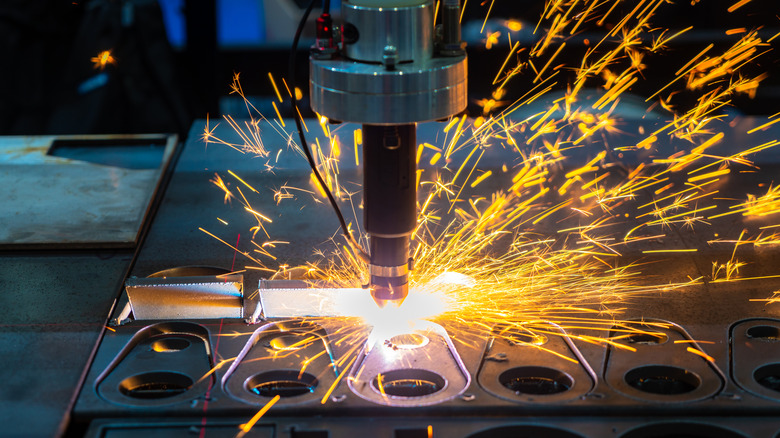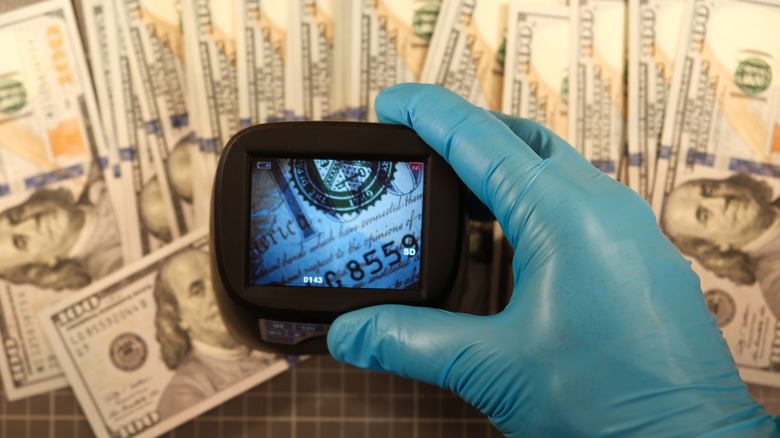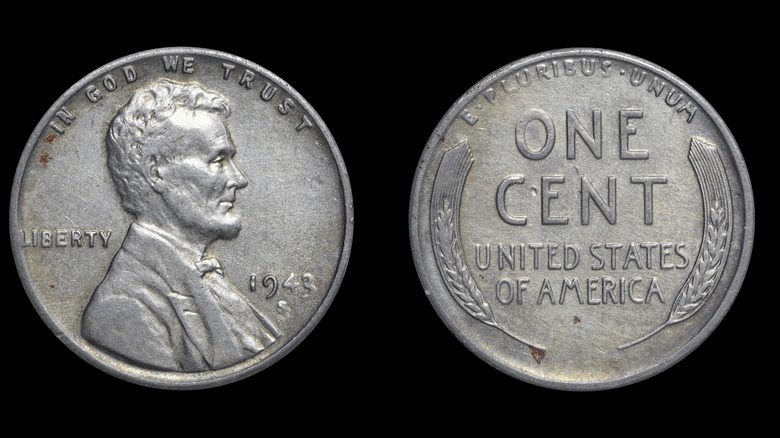The US Mint's First Laser-Engraved Coin Might Be A Bigger Deal Than You Think
Since some bad actors focus on creating counterfeit coins, passing them off as collector items or putting them into general circulation, the need for counterfeit detection methods is increasing. According to a 2025 Future Market Insights, Inc. report, the need for this service has created a $4.3 billion private industry that's expected to grow to $7 billion by 2035. With the same counterfeit prevention and detection goal, the U.S. Mint at West Point has responded with its first laser-engraved coin with special identifying marks.
This groundbreaking coin is a 2025 American Eagle one ounce silver proof with the same general design from 2021: meaning, the Walking Liberty figure created by Adolph A. Weinman that was initially used on the 1916 dime and half dollar. The mint mark, referencing West Point, is a W. The coin also contains a privy mark, which communicates changes in production. The distinguishing privy mark on this coin is a set of radiating laser beams. Collectors can buy this coin starting August 20, 2025, for $105, with 100,000 available and purchases limited to one per household.
The use of laser engraving marks a clear distinction in how these coins have been made in the past. However, this is simply another step forward in the evolution of money. Different versions of this evolution have taken place in the 19th, 20th, and 21st centuries in the United States.
19th-century US counterfeiting issues
Going back to the 1860s, when the U.S. government began issuing green paper money, it was in response to a counterfeiting issue and a way for people to recognize genuine money. By that time, more than 1,000 individual U.S. banks had issued their own currency with no governmental backup as insurance. If a bank went out of business, the money lost all of its value, so retailers and consumers alike struggled to know what money still maintained value. Plus, this broad range of paper money types made it so easy for counterfeiters that, at that time, the U.S. Marshals later estimated about one-third of circulating bills were actually fakes.
Recognizing that they needed to step in to address this challenge, the government began issuing official paper money known as greenbacks. Here's the reason they chose to include color on their bills: Cameras of the day could create black and white images, adding color made it harder for hucksters to counterfeit.
20th and 21st-century US coin counterfeiting scams
In 1943, the Mint produced the normally copper alloy penny out of steel, so that copper and nickel could be used in World War II efforts. A few dozen pennies that year, though, were accidentally made from the copper alloy material, making this special penny valuable and in demand by collectors. Not surprisingly, some swindlers coated the steel with copper to make it appear as the much rarer version. In this situation, the underlying steel penny could have been worth more than one cent.
As of August 2025, the listed values are $1 for 1943 steel pennies in XF40 condition; $11 in MS60 condition; $30-$40 in MS65 condition; $185 to $200 in MS67 condition; and anywhere from $3,000 to $5,550 in MS67 condition. A genuine copper alloy 1943 penny, though, can be worth $185,000-$250,000 in XF45 condition; $275,000-$375,000 in AU55 condition; and $350,000-$400,000 in AU58 condition. This huge difference in valuation, then, made it too tempting with con artists trying to fake the material used in the penny's production to gain illicit cash.
In the 21st century, with digital currency sometimes replacing physical money, a new form of counterfeiting is taking place: fake apps. In 2022, an FBI notification estimated that 244 cyber-victims had already suffered a collective loss of $42.7 million in this manner. As the definition of money changes, one thing remains true: the need for the government to fight back against counterfeiters, like with the new laser-engraved coin.


